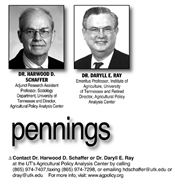|
Avian Influenza Outbreaks: An International Problem

On January 26, 2017, the World Health Organization (WHO) announce that “since June 2016, at least 24 countries in the WHO European Region have reported outbreaks of highly pathogenic avian influenza (HPAI) A(H5N8) virus in wild birds and domestic poultry. At least 3 of these countries have reported outbreaks in the last 2 weeks. Outbreaks have also been reported in countries in Africa, Asia and the Middle East” (http://tinyurl.com/zo6o528).
In Great Britain, the H5N8 strain was detected in a flock of 10,000 pheasants. Less than a week later the virus was identified in a nearby flock of 1,000 pheasants. Veterinary officials were able to identify a connection between the 2 facilities. The current outbreak there began in December 2016. British authorities are requiring “owners to keep poultry and captive birds indoors or to take steps to separate them from wild birds.,” according to “The Guardian” (http://tinyurl.com/h9n2zms).
Germany has culled nearly 50,000 turkeys due to the H5N8 avian influenza strain while producers in France have euthanized some 800,000 ducks in an attempt to contain the virus. A different strain, H5N1, has been detected in Bangladesh. A full listing of avian influenza outbreaks around the world can be found at the website of the World Organization for Animal Health (OIE) (http://tinyurl.com/h6l9fva).
These reports of avian influenza have a ring of tragic familiarity for US poultry producers who euthanized 43 million birds between late spring 2014 and mid-2015 to contain the contagion. Like the recent cases in Great Britain, movement between facilities was a vector for the spread of the disease, increasing its total impact.
As many as 10 different strains of avian influenza have been reported to the OIE in the last year. Reuters reports that “while most…strains…are currently low risk for human health, the sheer number of different types, and their presence in so many parts of the world at the same time, increases the risk of viruses mixing and mutating – and possibly jumping to people” (http://tinyurl.com/hxacxuz).
China has confirmed 106 of human cases of H5N9 avian influenza. Most of the cases have been the result of human-poultry contact. However, there have been two clusters where human-to-human transmission cannot be ruled out.
Viewing the current situation, Reuters writes, “‘This is a fundamental change in the natural history of influenza viruses,’ Michael Osterholm, an infectious disease specialist at University of Minnesota, said of the proliferation of bird flu in terms of geography and strains – a situation he described as ‘unprecedented’” (http://tinyurl.com/hxacxuz).
The current situation represents a risk not only to poultry around the world, but to humans as well. WHO (http://tinyurl.com/zo6o528) offers the following advice to the public:
• “Avoid contact with any birds (poultry or wild birds) or other animals that are sick or found dead and report them to the relevant authorities.
• “Do not touch birds or carcasses with bare hands. If you must handle a carcass, wear gloves or use an inverted plastic bag to collect the bird, and then wash your hands properly with soap or a suitable disinfectant.
•“Follow good food safety and food hygiene practices in line with WHO’s Five Keys to Safer Food, such as cooking food thoroughly at sufficiently high temperatures.”
In a separate press release, “WHO advises that travelers to countries with known outbreaks of avian influenza should avoid, if possible, poultry farms, contact with animals in live bird markets, entering areas where poultry may be slaughtered, or contact with any surfaces that appear to be contaminated with feces from poultry or other animals. Travelers should also wash their hands often with soap and water, and follow good food safety and good food hygiene practices.”
While pandemics caused by the spread of avian influenza are rare, adherence to best practices by poultry producers and the general public is important. ∆
DR. HARWOOD D. SCHAFFER: Adjunct Research Assistant Professor, Sociology Department, University of Tennessee and Director, Agricultural Policy Analysis Center
DR. DARYLL E. RAY: Emeritus Professor, Institute of Agriculture, University of Tennessee and Retired Director, Agricultural Policy Analysis Center
|
|